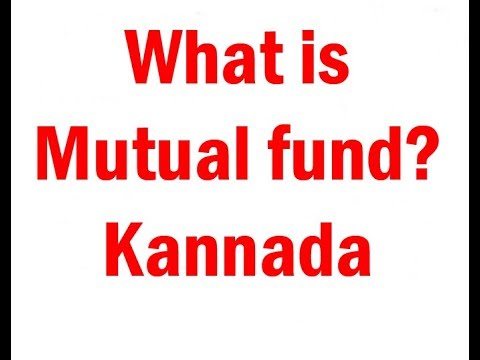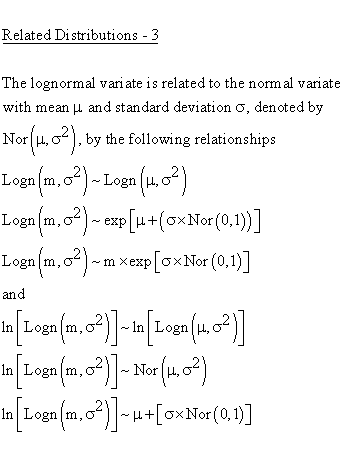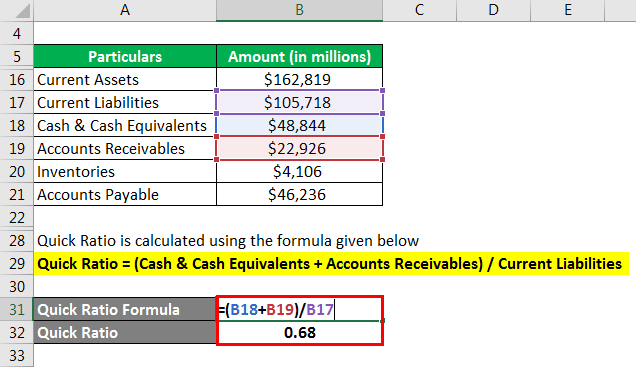Contents
Basically, this was a reassurance that the banks are okay, that they have access to a lot of cash if they want it, and that if things get much worse, the central financial institution is there to assist them. The Great Recession was a world economic downturn that devastated world financial markets in addition to the banking and actual estate industries. The disaster led to will increase in home mortgage foreclosures worldwide and brought on tens of millions of people to lose their life savings, their jobs and their houses.
What is “too big and complex to fail” was left to the judgment of the regulators and governments. When the US Government bailed out the AIG and not Lehman Brothers many questions were asked and debated on why this move; what kind of financial institutions are “too big to fail” or are systematically important for the financial system. Central https://1investing.in/ bankshave the discretion ofsetting interest rates in the country.The main objective of that is tomaintain price stability in the economywhich aids business welfare, and supports investment growth. The banks were aware of this, and this led to themtake on more risk than they should have– which then led to the sub-prime crisis of 2008.
In case a foreign bank having branch presence in India is a Global Systemically Important Bank (G-SIB), it has to maintain additional CET1 capital surcharge in India as applicable to it as a G-SIB, proportionate to its Risk Weighted Assets in India. RWA, are used to link the minimum amount of capital that banks must have, with the risk profile of the bank’s lending activities . BCBS is the primary global standard setter for the prudential regulation of banks. The Reserve Bank of India has retained State Bank of India, ICICI Bank and HDFC Bank as Domestic Systemically Important Banks (D-SIBs) or banks that are considered as “too big to fail”.
Generally talking, when a government considers a corporation, an organization, or an trade sector too necessary to the general well being of the economic system, it does not enable it to fail. Government bailouts usually are not new, nor are they restricted to the United States. Regulation and supervision of such large and diversified financial institutions assumes special significance considering the system wide damage that their failure could potentially cause.

The Basel Committee on Banking Supervision released a framework in November 2011 for identifying the global systemically important banks and the magnitude of additional loss absorbency capital requirements applicable to them. The BCBS further required all member countries to have a regulatory framework to deal with domestic systemically important banks (D-SIBs). After 2008 global financial crisis, the Financial Stability Board or FSB recommended that all member countries needed to have in place a framework to reduce risks attributable to Systemically Important Financial Institutions in their jurisdictions. In November 2011, the Basel Committee on Banking Supervision came out with a framework for identifying the Global Systemically Important Banks or G-SIBs and the magnitude of additional loss absorbency capital requirements applicable to these G-SIBs.
Fears of such damage lead to costly bank bail-outs by governments, as was seen in the United States and Western Europe during the course of theglobal financial crisis. And finally, the moneylenders of the industry form the final piece of the triumvirate responsible for the crisis. These elusive folks deal in such complicated instruments as Commercial Papers that they often slip under the radar because of the sheer complexity involved in buying them. You could get your hands on one of these if you were determined enough to push through. But not a lot of people are into bonds and commercial papers and so the only prominent actors include large corporates and fund houses who buy and trade these bonds in large volumes. Our story today will focus on Mutual Fund houses in particular – the good people who pool money from the general public and then invest them elsewhere to offer what they claim are better returns than the market average.
But the main opposition has asserted that it will not be part of the interim administration unless the President steps down, which Gotabaya Rajapaksa is not willing to do. IAIS, established in 1994, is a voluntary membership organization of insurance supervisors and regulators from more than 200 jurisdictions, constituting 97% of the world’s insurance premiums. As you might already know,a smallcase is a basket of stocks/ETFs that represents an underlying idea.For you to be fully aware of your portfolio composition, it isimportant to know the characteristics of the stocks you ownas part of a smallcase. Third, the roundtable points out that some other countries’ banks are bigger as a percentage of their domestic economies than is the case in the US. Lowest Bucket with surcharge of 0.20% and the highest will have a surcharge f 1%. It too has kept an empty bucket, which will be like a warning, dissuading banks from increasing their systemic importance in the future.
Budget with vision puts India on the path to be a world champ: India Inc leaders
Some naysayers have equated such manipulation to Ponzi Schemes, a fraudulent investment operation that offers returns using money paid by subsequent investors, rather than from any actual profit earned. While there are similarities, in that both schemes require new investment from other sources to keep working, NBFCs, unlike Ponzi schemers, have the capacity to earn income from their usual lending operations. And so NBFC’s get around this little inconvenience rather easily until that is they can “roll over” the funds no more i.e. the lenders refuse to invest in Commercial Papers. While regular banks take deposits from people and cover a wide gamut of responsibilities including providing payment and settlement systems, savings accounts, cheques, credit lines etc. Mannapuram finance specialises in gold loans, Bajaj Finance in automobile loans and this specialisation allows NBFCs to occupy a special place in the banking industry.

A study from the Federal Reserve Bank of New York concluded big banks can borrow more cheaply.One from the Clearing House, a banking industry trade association, argues that the subsidy has faded with new regulations, and one from the U.S. Industry experts say that expectations of government support amplifies risk-taking, reduces market discipline, creates competitive distortions and increases probability of distress in future. After the sampling for D-SIBs, all the shortlisted banks go through a detailed study based on a range of indicators to devise a composite score.
There were also rumours about DSP being under sustained pressure to meet its own payment obligations. Running a mutual fund means you ought to be wary about customer withdrawals – financiers call this redemption pressure. With depleting cash reserves it seemed the DHFL Commercial Paper sale was imperative. The assumption was that with the eroding trust, the inflows from mutual funds were likely to stop and when they did NBFC’s would have nowhere to go.
TOP SEARCHED COMPANIES
This perception of TBTF creates an expectation of government support for these banks at the time of distress”. Moreover, due to this perception of these banks as being TBTF, they enjoy certain advantages in the funding markets. These are those banks which are – in domestic market – big in size and have the potential to disrupt the financial stability in case they fail.
- This TBTF perception creates an expectation of government support in for these banks at the time of distress.
- During the primary 10 months of the Great Depression, 744 banks failed, and during 1933 alone, about 4,000 American banks failed.
- The D-SIB framework focuses on the impact that the distress or failure of banks will have on the domestic economy.
Although its effects had been positively global in nature, the Great Recession was most pronounced within the United States—the place it originated because of the subprime mortgage crisis—and in Western Europe. If you’ve uninsured deposits at an FDIC-insured establishment, you may have an issue. This is the second bank to fail in 2020, and it’s the primary financial institution to fail in the coronavirus crisis. Even although this financial institution failed within the coronavirus crisis, it had major financial problems lengthy before the pandemic started.
Reserve Bank of India has included HDFC Bank in the list of ‘too big to fail’ lenders. With the inclusion of HDFC Bank in the list, there will now be three ‘too big to fail’ financial entities in the country. In a two-step process, RBI first creates a sample of banks to be assessed for their systemic importance which mostly excludes smaller banks of low systematic importance. Every year in August, the RBI has to disclose the names of banks designated as D-SIBs and place these banks in appropriate buckets depending upon their Systemic Importance Scores. During the Nineteen Twenties, earlier than the Black Tuesday crash of 1929, a median of about 70 banks had failed every year nationwide.
Markets gain for 4th straight week
Besides, does anyone seriously think that any administration would allow another Lehman-type failure? Lehman Brothers Holdings had assets of about $640 billion when it went bankrupt; Bear Stearns was slightly smaller at its peak. All of the Big Six are currently larger than either investment bank was when it failed. India has now three too-big-to-fail banks, an idea that sprang from the lessons of the global financial crisis and which the Reserve Bank of India adopted to follow global best practices. If that is not enough, the clearing houses contribute up to 25% of their capital, before a default fund financed by banks and other clearing clients is used. This would double clearing houses’ contributions in a crisis to 50% of the capital they are required to set aside by regulators against losses.

Internationally, regulators are realizing that this implicit guarantee of rescue available to the too-big-to-fail banks is unfair. Indian policymakers need to treat banks like corporations, allow them to own up past missteps and in the case of extreme distress, allow them to die. But in a crisis, there are fears that a clearing house might not have the resources to meet all its commitments which could rock the financial system and force governments to step in. The size and type of defaults that have occurred in China in recent times indicate that the notion of “too big to fail” may no longer apply to the nation’s borrowers, according to Goldman Sachs Group.
Trending Stocks
Depositors who had over the insurance limits had been vulnerable to losing some or all of their uninsured deposits. In those instances, the FDIC liquidates the financial institution and sends checks to depositors of solely their insured deposits. When a financial institution fails, it may attempt to borrow money from other solvent banks in order to pay its depositors. If the failing bank can not pay its depositors, a financial institution panicmight ensue in which depositors run on the bank in an try to get their money back. This could make the state of affairs worse for the failing bank, by shrinking its liquid property as depositors withdraw cash from the financial institution.
Congressman Stewart McKinney in a 1984 Congressional listening to, discussing the Federal Deposit Insurance Corporation’s intervention with Continental Illinois. After a bank failure is announced, there may be little purpose too big to fail meaning to make a run on the financial institution, or withdraw your deposits, in case your belongings are insured. If the FDIC has already taken over, your cash is not held by the weak and failing financial institution.
What is ‘Bailout’
Then in 2007 and 2008, a series of deeply indebted investment banks not protected by the FDIC faced the equivalent of bank runs as creditors and shareholders started to doubt their solvency. When one, Lehman Brothers Inc., was allowed togo under, regulators learned that the biggest financial firms were so interconnected that only massive bailouts would keep dozens more around the world from failing. Regulators hastily extended the safety net until it coveredmore than halfthe financial sector. Dodd-Frank strengthened the hand of regulators in powerful ways, including letting the U.S. designate, regulate and dismantle in case of failure so-calledsystemically important financial institutions. The government subsequently said General Electric Co. and several large insurers were SIFIs, resulting in those companies ‘ selling units and shrinking assets to free themselves of the label.
